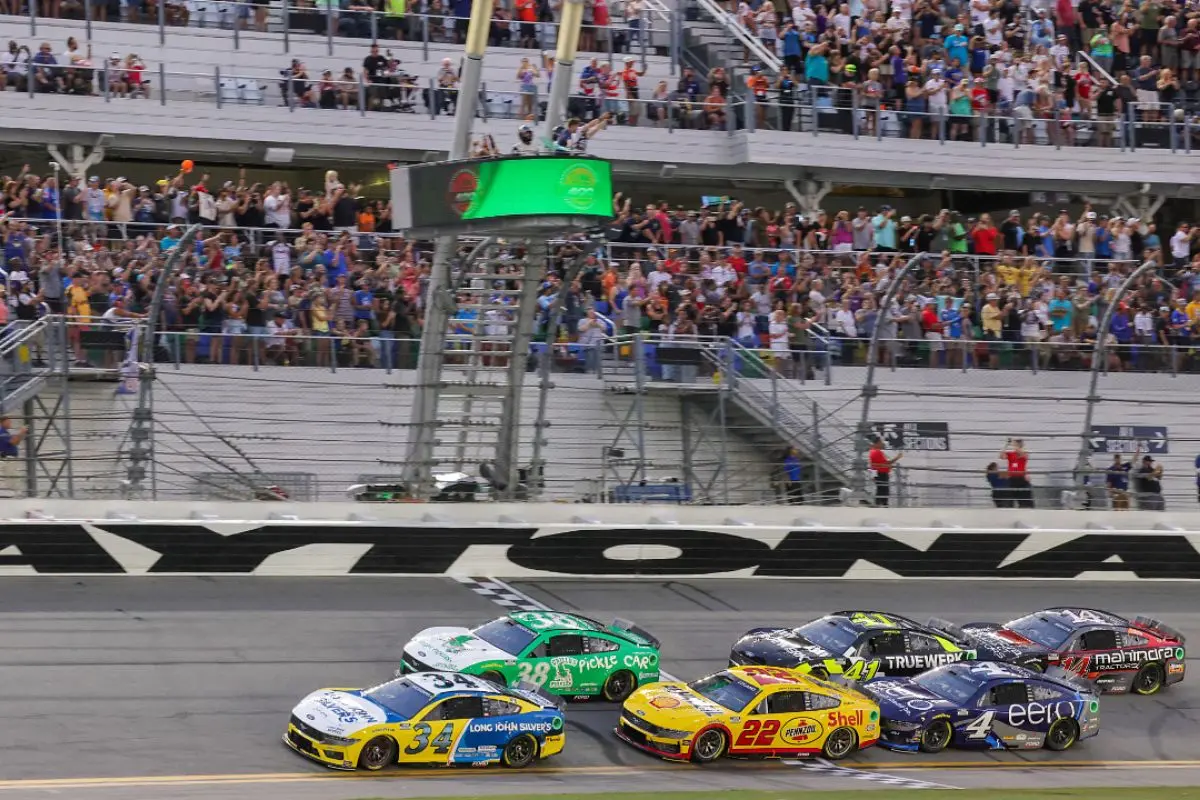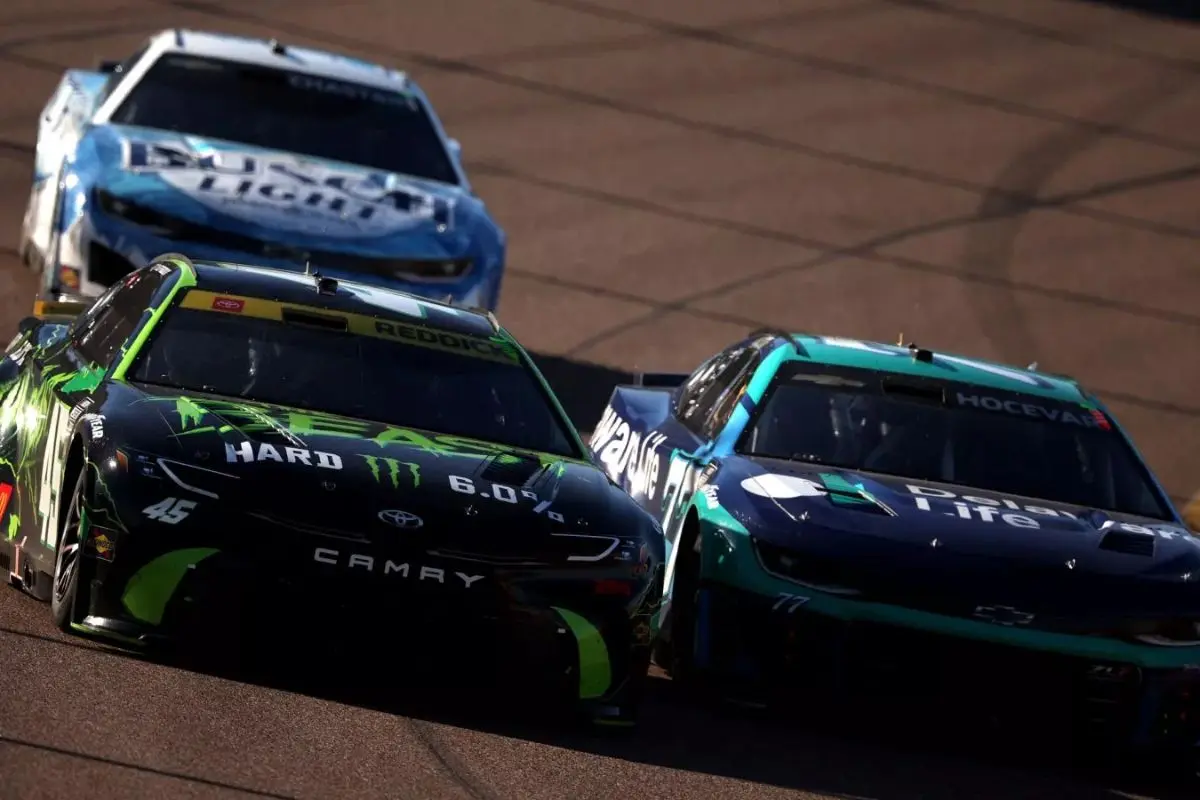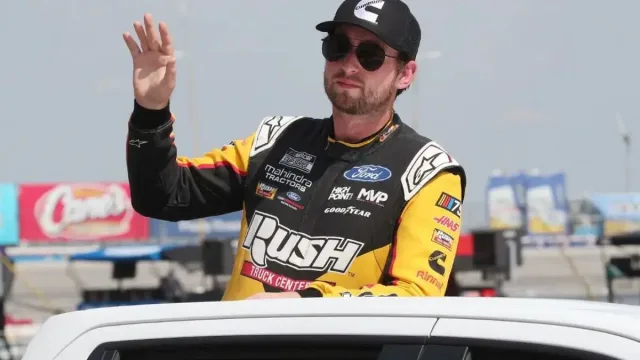Chase Briscoe Talks Money and Sponsorship: Chase Briscoe‘s insights into sponsorship dynamics reveal the financial strain shaping NASCAR’s Cup Series. Sponsorship is a critical component, driving team operations and car improvements amidst substantial costs. Briscoe critiques the rise of ‘pay drivers’, highlighting how financial backing can overshadow skill, causing concerns about racing’s meritocracy.
Key Highlights
- Chase Briscoe criticizes the prevalence of pay drivers over talented drivers in NASCAR’s Cup Series.
- Financial backing often influences driver selection and career sustainability more than on-track performance.
- Young drivers struggle to balance their racing aspirations with the need for substantial financial support.
- The current sponsorship-driven system raises concerns about fairness and meritocracy in NASCAR.
- Calls for reforms emphasize prioritizing driver skill over financial contributions to maintain competitive integrity.
The Role of Sponsorship in NASCAR
In the high-octane world of NASCAR, sponsorship is not merely a financial lifeline; it is the engine that drives the entire sport. The phrase “Win on Sunday, sell on Monday” captures the symbiotic relationship between racing success and commercial interests. Sponsorship dollars are the lifeblood that fuels NASCAR teams, underwriting everything from car development to team operations.
It is a delicate balance where performance on the track can translate into increased visibility and brand loyalty for sponsors, making NASCAR an attractive platform for corporate investment.
Teams in NASCAR’s Cup Series, the pinnacle of stock car racing, navigate a complex landscape where sponsorship is paramount to survival. The cost of running a competitive team is staggering, with expenses such as equipment, personnel, and travel accumulating rapidly. As a result, securing substantial sponsorship is critical.
This necessity compels teams to align with brands willing to invest heavily, often prioritizing financial backing over pure racing skill.
In recent years, a discernible shift has occurred, with financial clout often overshadowing talent. This trend has sparked debate within the racing community, as drivers and purists express concern over the dilution of meritocracy in the sport.
While sponsorship guarantees the continuation of NASCAR, it has also raised questions about the essence of competition, where the focus sometimes drifts from raw ability to financial capability. Teams and drivers are therefore caught in a perpetual balancing act, working to maintain both the sport’s integrity and its fiscal viability.

Chase Briscoe’s Perspective on Pay Drivers
As the dynamics of sponsorship continue to shape the landscape of NASCAR, the experience of drivers like Chase Briscoe offers a revealing lens into the industry’s challenges. Briscoe, poised to shift to Joe Gibbs Racing‘s No. 19 Toyota, articulates a critical viewpoint on the prevalence of pay drivers within the sport. In a frank discussion on the podcast “Dinner with Racers,” Briscoe labeled the situation as “unfortunate,” highlighting the financial demands that can overshadow pure talent.
“There’s, I mean, it’s always more money-driven, but it, it has changed. I feel like once you get to the cup level, it is a little bit different. Like typically at the cup level at least, like for the most part, everybody kind of just goes and gets who they want and, they figure out the funding. But you still definitely have, you know, parts of the cup series where guys are, you know, paying to be there. They have a sponsor or something.” – Chase Briscoe
Briscoe’s assessment highlights a deeply ingrained issue within NASCAR, where monetary backing often dictates career trajectories. His comments reflect a complex understanding of the sport’s financial ecosystem. While acknowledging that the Cup Series does offer some reprieve with teams prioritizing talent acquisition, Briscoe concedes that financial contributions from drivers or their sponsors are still a decisive factor in securing seats.
This duality, where talent coexists with economic necessity, is representative of broader trends in motorsports. The implications of Briscoe’s perspective are profound, especially for emerging talents lacking substantial financial support. The competitive nature of NASCAR necessitates not only driving skill but also tactical financial partnerships.
Prominent Examples of Pay Drivers in NASCAR
Frequently, the presence of pay drivers in NASCAR serves as a polarizing topic, illustrating the intersection of wealth and opportunity within the sport. This dynamic often raises questions about meritocracy in a sport where talent competes with financial backing. A quintessential example is Paul Menard, whose career in NASCAR was largely supported by his family’s substantial financial resources.
Despite a performance record that rarely saw him finishing above 15th place, Menard’s presence in the NASCAR Cup Series was assured through the financial power of the Menards home improvement empire, which provided consistent sponsorship. Menard’s case typifies how financial backing can overshadow performance, allowing drivers with less impressive track records to secure and maintain coveted seats in the series.
This reality often incites debate among fans and industry insiders who advocate for talent-based advancement over financial influence. In sharp contrast, Daniel Suarez‘s path highlights the harsh realities for drivers lacking substantial financial support.
Despite showing promise and having a formidable racing resume, Suarez found himself edged out of his seat at Stewart-Haas Racing in 2019, primarily due to waning sponsorship. This emphasizes a pervasive truth in NASCAR: the ability to secure sponsorship can be as vital as, if not more than, race-day performance.
These examples encapsulate the dichotomy within NASCAR, where the financial muscle often dictates the longevity and path of a driver’s career, sometimes at the expense of raw talent. Such cases continue to fuel the discourse on the need for balance between commercial interests and sporting integrity in motorsports.

Kyle Busch and the Sponsorship Struggles at JGR
Kyle Busch’s departure from Joe Gibbs Racing (JGR) highlights the intricate relationship between talent, performance, and financial backing in NASCAR, echoing the challenges faced by drivers like Paul Menard and Daniel Suarez. Busch, a two-time NASCAR Cup Series champion with 56 wins during his 15-year tenure at JGR, found himself at a crossroads when efforts to secure sponsorship fell short.
This situation emphasizes a harsh reality in motorsports: even the most successful drivers cannot rely solely on their track records to guarantee their positions within top teams.
The failed negotiations with Oracle, a tech giant that had shown interest but ultimately withdrew, were a crucial point. Busch openly questioned JGR’s commitment to securing sponsorship, suggesting that the team did not exhaust all avenues. His assertion, “Did JGR try hard enough to sell me? My answer to that is no,” reflects a broader concern within the industry—teams must balance their financial strategies against retaining top-tier talent.
“Did JGR try hard enough to sell me? My answer to that is no. So, I’m like, ‘There’s no way they’re [Oracle] going to do a NASCAR deal. Not a chance.’ So, I told those guys, ‘Look, you got to look elsewhere. You got to look outside… [Instead], they offered me a contract to race there, and they weren’t going to have sponsorship on the car, but I didn’t feel like that was fair for the 15 years that I was there; I didn’t want Joe putting his own money into the program.” – Kyle Busch
JGR’s decision to offer Busch a contract devoid of sponsorship is indicative of the financial strains teams face. Despite his substantial contributions, Busch perceived this as an unfair proposition, one that may set a precedent in how celebrated drivers must navigate their careers amid financial uncertainties.
The sponsorship landscape in NASCAR demands adaptability and foresight, as teams and drivers similarly grapple with the evolving dynamics between corporate backing and competitive success. Busch’s exit from JGR serves as a poignant reminder of these complexities, and the constant negotiation between value and viability in the sport.
The Financial Barriers in NASCAR
Navigating the financial labyrinth of NASCAR presents a formidable challenge for drivers and teams alike, as sponsorship deals often dictate career longevity and success on the track. The intricate dynamics of financial backing were prominently highlighted by Kyle Busch’s recent exit from Joe Gibbs Racing (JGR), a development that emphasizes the predominance of economic considerations over sheer talent. The incident serves as a poignant reminder that the financial infrastructure within NASCAR can act as both a gateway and a barrier to aspiring drivers.
Sponsorship is the lifeblood of NASCAR, with teams heavily reliant on these financial commitments to sustain operations. For a driver, securing a primary sponsor can mean the difference between racing in the prestigious Cup Series or facing career stagnation.
Yet, this dependency on sponsorship creates a precarious environment where monetary backing can overshadow racing skill. While JGR has remained reticent on Busch’s departure, the general perception within the industry is that financial constraints played a considerable role, highlighting a systemic issue that affects even the most successful drivers.
As NASCAR continues to evolve, there is a growing call within the industry to create a more equitable system. This would involve implementing measures that prioritize driver skill and potential over financial resources.
 23XI Racing Gets Massive Financial Lift” width=”1200″ height=”800″ srcset=”https://slicksandsticks.com/wp-content/uploads/2024/12/23XI-Racing-Gets-Massive-Financial-Lift.webp 1200w, https://slicksandsticks.com/wp-content/uploads/2024/12/23XI-Racing-Gets-Massive-Financial-Lift-300×200.webp 300w, https://slicksandsticks.com/wp-content/uploads/2024/12/23XI-Racing-Gets-Massive-Financial-Lift-1024×683.webp 1024w, https://slicksandsticks.com/wp-content/uploads/2024/12/23XI-Racing-Gets-Massive-Financial-Lift-768×512.webp 768w, https://slicksandsticks.com/wp-content/uploads/2024/12/23XI-Racing-Gets-Massive-Financial-Lift-630×420.webp 630w, https://slicksandsticks.com/wp-content/uploads/2024/12/23XI-Racing-Gets-Massive-Financial-Lift-150×100.webp 150w, https://slicksandsticks.com/wp-content/uploads/2024/12/23XI-Racing-Gets-Massive-Financial-Lift-696×464.webp 696w, https://slicksandsticks.com/wp-content/uploads/2024/12/23XI-Racing-Gets-Massive-Financial-Lift-1068×712.webp 1068w” sizes=”auto, (max-width: 1200px) 100vw, 1200px” />
23XI Racing Gets Massive Financial Lift” width=”1200″ height=”800″ srcset=”https://slicksandsticks.com/wp-content/uploads/2024/12/23XI-Racing-Gets-Massive-Financial-Lift.webp 1200w, https://slicksandsticks.com/wp-content/uploads/2024/12/23XI-Racing-Gets-Massive-Financial-Lift-300×200.webp 300w, https://slicksandsticks.com/wp-content/uploads/2024/12/23XI-Racing-Gets-Massive-Financial-Lift-1024×683.webp 1024w, https://slicksandsticks.com/wp-content/uploads/2024/12/23XI-Racing-Gets-Massive-Financial-Lift-768×512.webp 768w, https://slicksandsticks.com/wp-content/uploads/2024/12/23XI-Racing-Gets-Massive-Financial-Lift-630×420.webp 630w, https://slicksandsticks.com/wp-content/uploads/2024/12/23XI-Racing-Gets-Massive-Financial-Lift-150×100.webp 150w, https://slicksandsticks.com/wp-content/uploads/2024/12/23XI-Racing-Gets-Massive-Financial-Lift-696×464.webp 696w, https://slicksandsticks.com/wp-content/uploads/2024/12/23XI-Racing-Gets-Massive-Financial-Lift-1068×712.webp 1068w” sizes=”auto, (max-width: 1200px) 100vw, 1200px” />
News in Brief: Chase Briscoe Talks Money and Sponsorship
The financial dynamics of NASCAR’s Cup Series highlight the crucial role of sponsorship in shaping competitive landscapes. Sponsorship serves as both a gateway and barrier, with pay drivers often maneuvering through complex sponsorship agreements to secure rides. Prominent figures, such as Kyle Busch, exemplify the challenges even established drivers face in maintaining sponsorships. These financial barriers accentuate the necessity for drivers and teams to cultivate robust sponsorship relationships to sustain competitiveness and guarantee longevity within the sport.
ALSO READ: How Chase Briscoe’s ‘Fast and Furious’ Experiment Went Wrong: “We Ended Up Blowing…”
